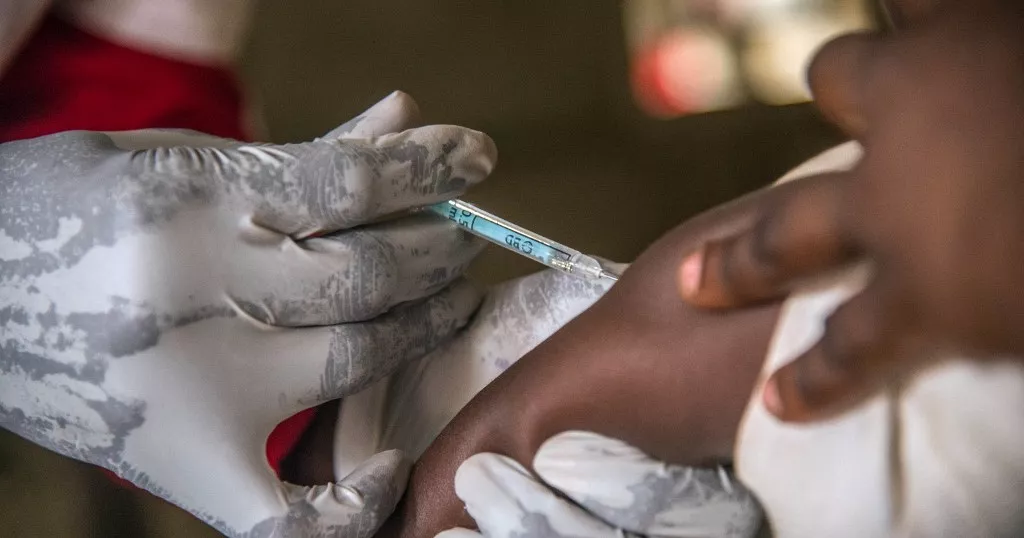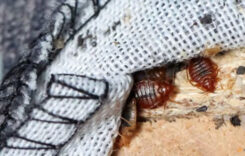Despite rapidly increasing measles immunisation coverage in Zimbabwe, measles remains endemic, and regular outbreaks occur, according to the Ministry of Health and Child Care.
The country suffered a severe nationwide measles outbreak in April 2022, that proved to be deadly, particularly for children. Within the first six months of the outbreak more than 750 children had died from the disease.
In 2024, the government announced plans to conduct a mass measles vaccination campaign in Hurungwe, in Mashonaland West province in response to an outbreak in the district that had claimed the lives of 35 children within weeks.
This factsheet provides facts about measles.
What is Measles/Gwirikwiti/ Isimungumungwame?
Measles is a highly contagious airborne viral disease which spreads through the air when an infected person breathes, coughs, sneezes or talks. It can cause severe health complications, and even death.
Who is at risk of measles?
- Unvaccinated young children under 5-years-old
- Any non-immune person (not vaccinated or vaccinated but did not develop immunity) can become infected.
- Pregnant persons are at highest risk of severe measles complications.
- People who travel to parts of the world where measles is common.
- People who work in healthcare or childcare facilities are also more at risk because they’re more likely to interact with sick people.
How is measles spread?
If you breathe in the particles from someone who has measles, you can get measles too. The airborne droplets can remain in a room for two hours even after the person with measles is gone. Droplets can land on surfaces and spread that way as well.
Measles is spread by:
- Having direct contact with an infected person’s respiratory secretions by droplet transmission through, kissing and sharing saliva contaminated drinks or food.
- Shaking hands, holding hands or hugging someone with measles.
- Touching a surface containing the virus and then touching your mouth, nose or eyes.
- From pregnant people to their babies — either during the pregnancy, delivery or while nursing.
What season is measles most common?
In temperate climates peak measles incidents occur in late winter and early spring.
Signs and Symptoms of measles
Symptoms of measles usually begin 10–14 days after exposure to the virus. A prominent rash is the most visible symptom.
Early symptoms usually last 4–7 days. They include:
- running nose
- cough
- red and watery eyes
- small white spots inside the cheeks.
The rash begins about 7–18 days after exposure, usually on the face and upper neck. It spreads over about 3 days, eventually to the hands and feet. It usually lasts 5–6 days before fading.
Most deaths from measles are from complications related to the disease.
Complications can include:
- blindness
- encephalitis (an infection causing brain swelling and potentially brain damage)
- severe diarrhoea and related dehydration
- ear infections
- severe breathing problems including pneumonia.
How is measles treated?
There’s no cure for measles but you can be vaccinated and have less chances of being infected.
You can manage your symptoms by:
- Taking acetaminophen for aches, pains or fever.
- Getting plenty of rest.
- Drinking lots of fluids.
- Gargling with salt water.
- Avoiding harsh light if your eyes hurt.
- Doctors may use antibiotics to treat pneumonia and infections in the ears and eyes
- All children or adults with measles should receive two doses of vitamin A supplements, given 24 hours apart. This restores low vitamin A levels that occur even in well-nourished children. It can help prevent eye damage and blindness. Vitamin A supplements may also reduce the number of measles deaths.
Can you prevent measles?
Yes, vaccination is the best way to prevent measles. If you receive a measles vaccine, you’re immune and unlikely ever to get the virus. The measles vaccine is extremely effective at preventing measles. It’s best to receive the vaccine as a child as part of your regular immunization schedule. But receiving the vaccine at any age is better than not receiving it at all. Most people receive the vaccine as a baby, but you can also receive it as an adult.
What does the measles rash look like?
The rash starts out as flat red spots on your face and then moves downward to cover your whole body. Then, smaller raised white spots may appear on top of the red rash. The spots might join together as the rash goes down your body.
Sources
World Health Organization (WHO)
United Nations International Children’s Emergency Fund (UNICEF)
Ministry of Health and Child Care (MoHCC)
https://www.afro.who.int/countries/zimbabwe/news/zimbabwe-tackles-measles-outbreak-through-intensive-vaccination-campaigns
https://reliefweb.int/report/zimbabwe/zimbabwe-measles-outbreak-final-report-dref-ndeg-mdrzw018
https://www.unicef.org/zimbabwe/stories/measles-vaccination-drive-shifts-gear
Related
Do you want to use our content? Click Here












